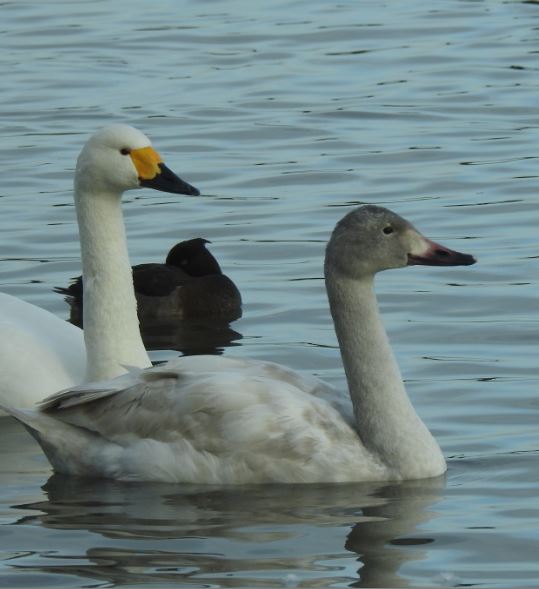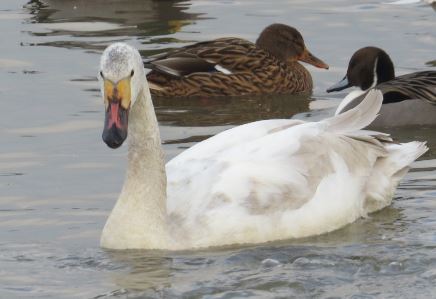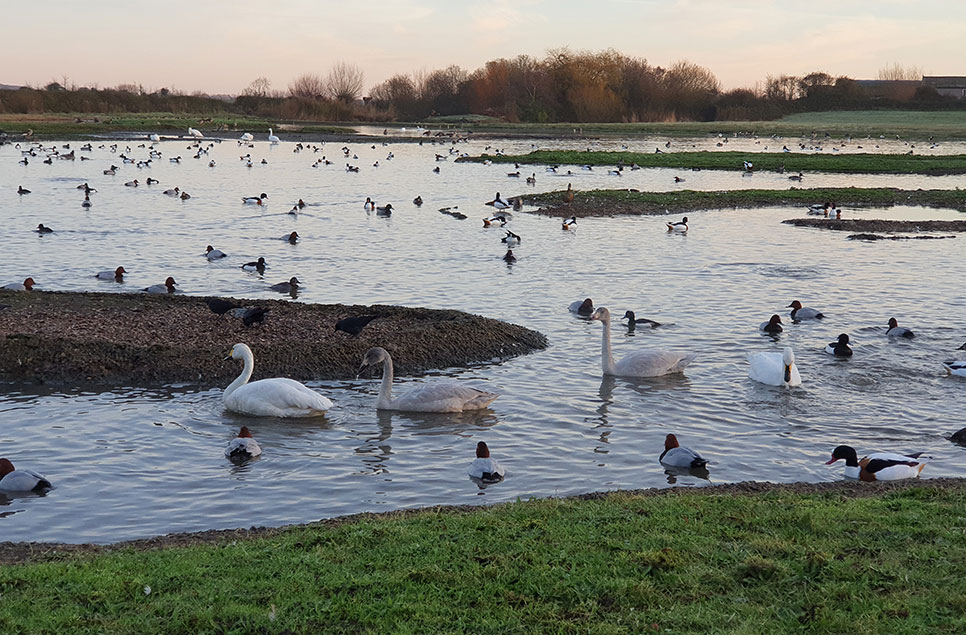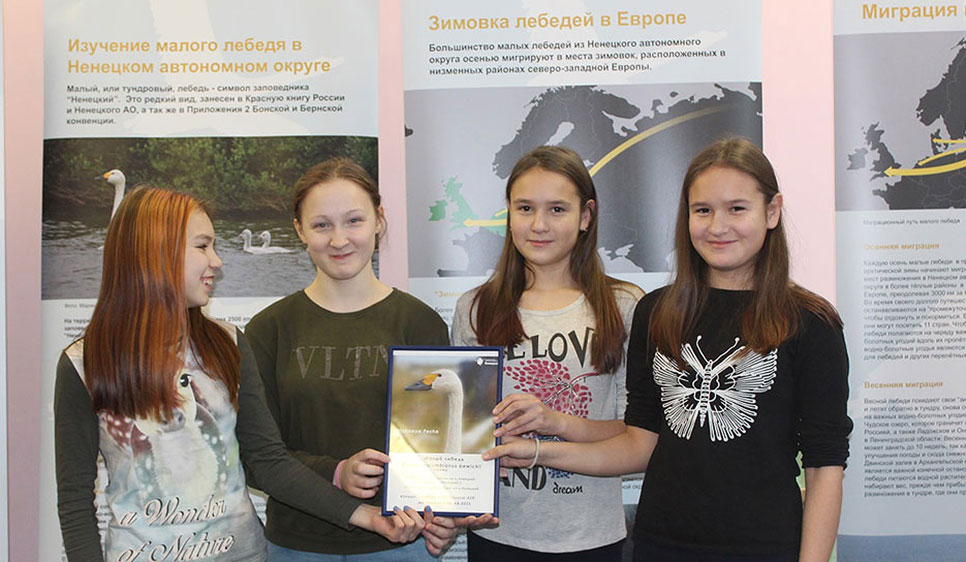It's a cygnets life
As we glimpse the winter’s end on the horizon, the Bewick’s at Slimbridge are showing signs of pre-migratory behaviour. Many are spending large parts of their day resting in preparation for their tough 2,500 mile journey back to the Russian arctic which they will start later this month.
Time seems to fly – it doesn’t seem long ago that we watched our first visitors of the winter fly in, Tool and Times with their two cygnets. But during these winter months, we have been watching our cygnets transform from lean and timid youngsters, little more than three months old and generally glued to their parents, to stockier, emboldened and increasingly independent individuals. Pair Crème and Brule are now often seen without their two cygnets who seem to confidently roam around the lake on their own during the daily supplementary grain feed. Gaining independence is of course an important part of growing up and will put these individuals in good stead for the many challenges that lie ahead. This does not mean that family ties are completely severed however - young birds may loosely associate with their parents for at least a couple of years and it’s not uncommon to see extended family reuniting to fend off territory from competitors! In fact, Croupier who at 25 years old, is our oldest known swan here at the moment, was seen to associate with his mother Casino for seven years! This might strain even the closest of family bonds - parents with lingering youngsters may push them away at times, particularly if they have a new brood to look after!
 Confident cygnet (Steve Heaven)
Confident cygnet (Steve Heaven)
And then there are those rare exceptions - cygnets that have always been very confident, even on first arrival in a new place and when mixing with a new crowd. One such individual, a cygnet of Chapeau and Chapellerie, always manoeuvres into the best positions at feed times, closely stalking the feeder around the lake and venturing into crowds of swans and Canada geese that would deter even the most dominant adult swan. Characters are formed even at this early age!
 Cygnet of Ypres and Somme (Steve Heaven)
Cygnet of Ypres and Somme (Steve Heaven)
Those that were born in the early summer are usually a little more advanced in development. The cygnets of Ypres and Somme are almost white now with few signs of the grey feathers that make the juveniles so distinctive. Their bill patterns are also forming nicely and we might therefore have a chance of recognising them if they return again next winter.
Over at Welney and the Ouse Washes in south-east England, 2,997 Bewick’s were recorded on 17 January (WeBS/RSPB). This falls slightly below the 5-year January average for this area (3,020 birds). Numbers have generally stabilized now and we are unlikely to see many more new visitors before the start of spring migration. You can make the most of our migratory swans before they head off by seeing them at the daily swan feeds at WWT Slimbridge and Welney. Check out our website for further details.



